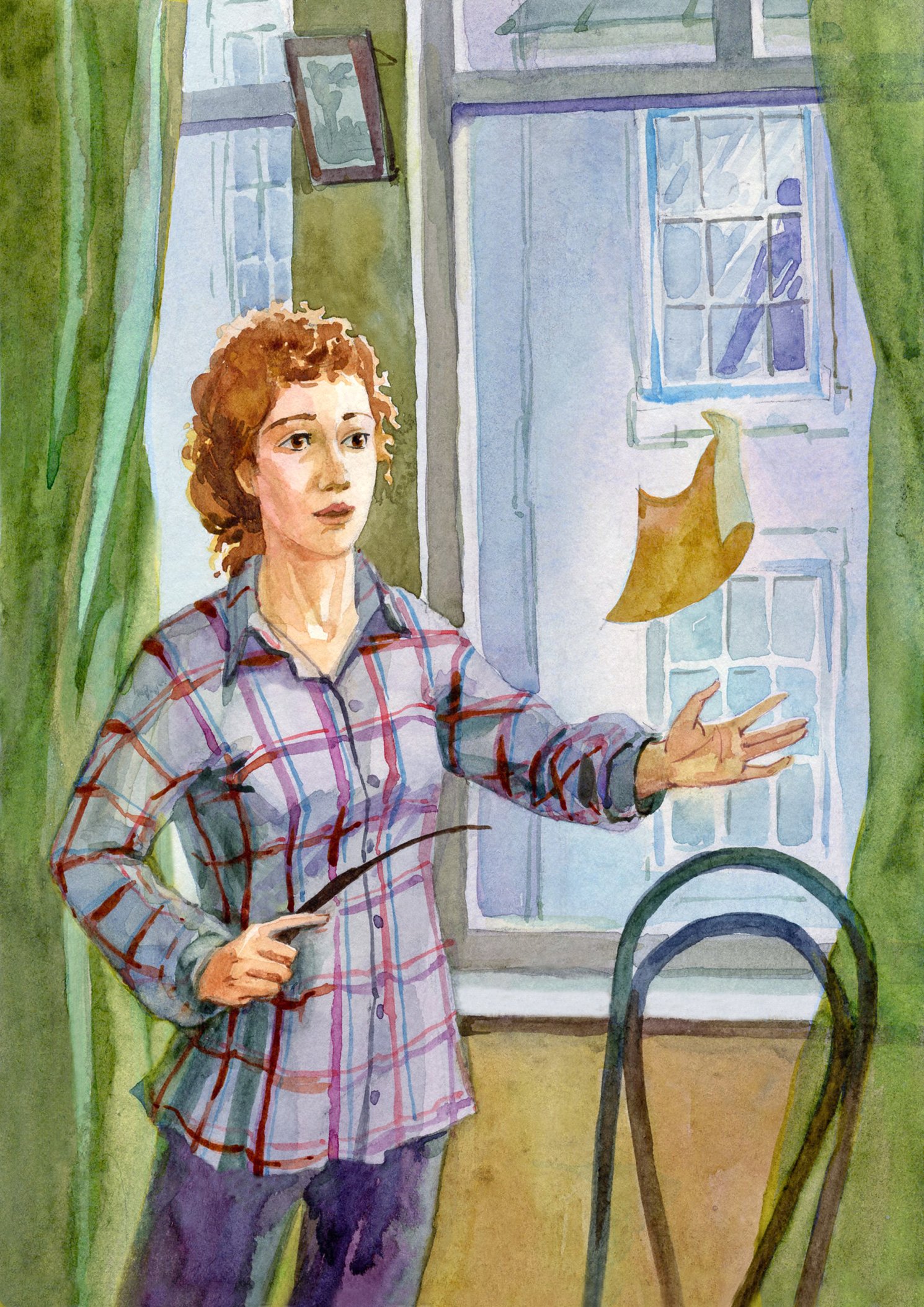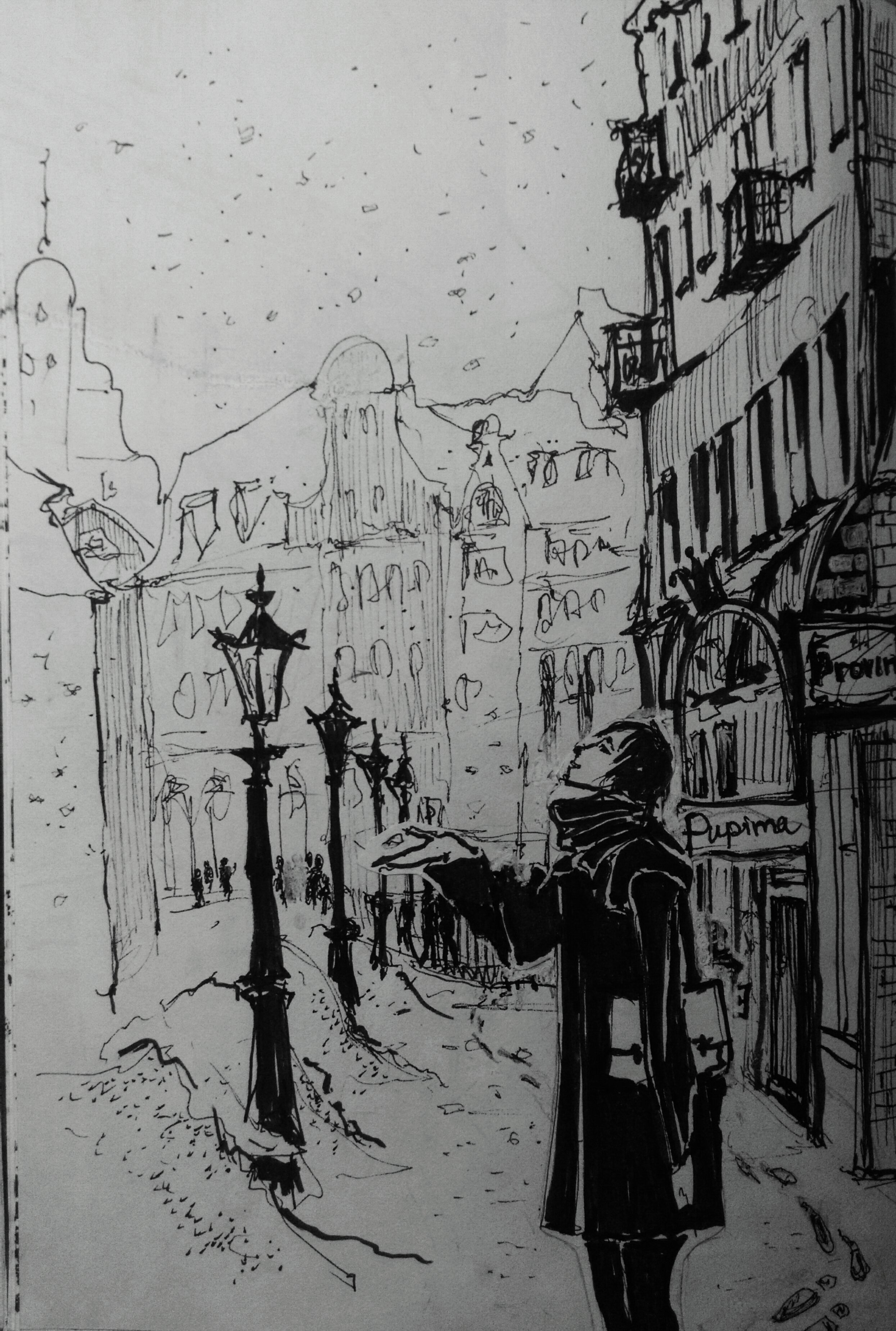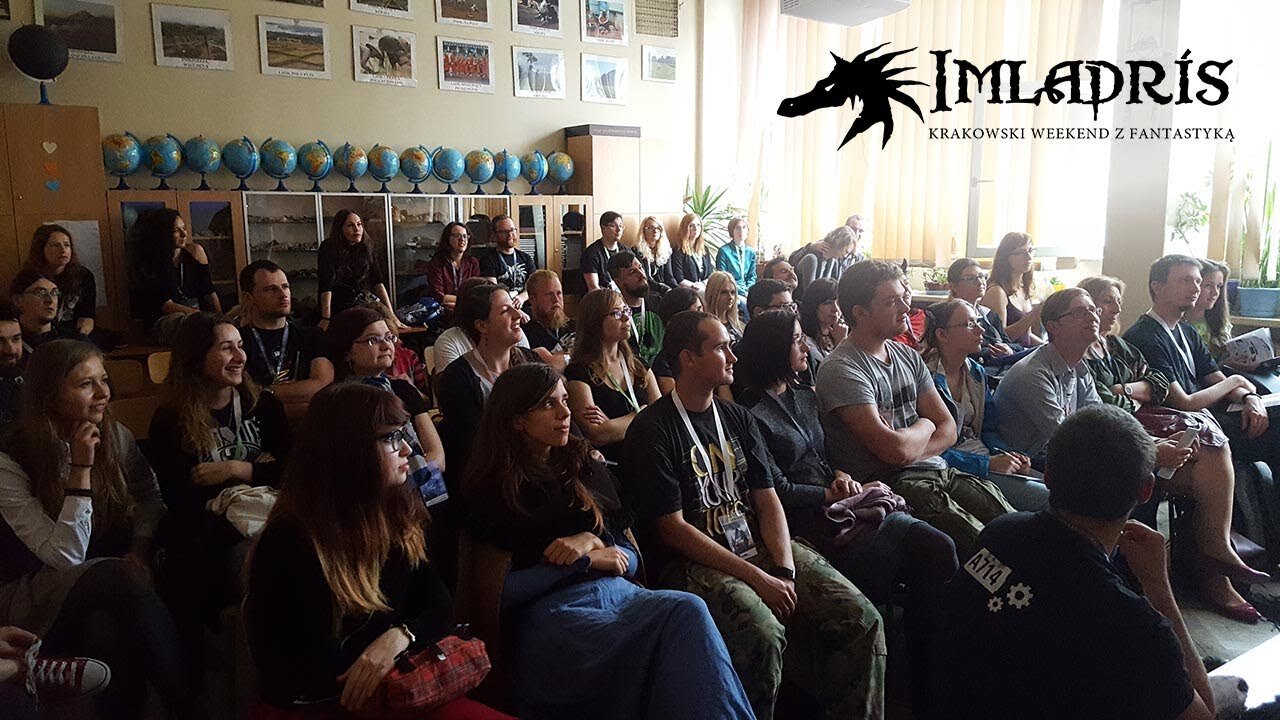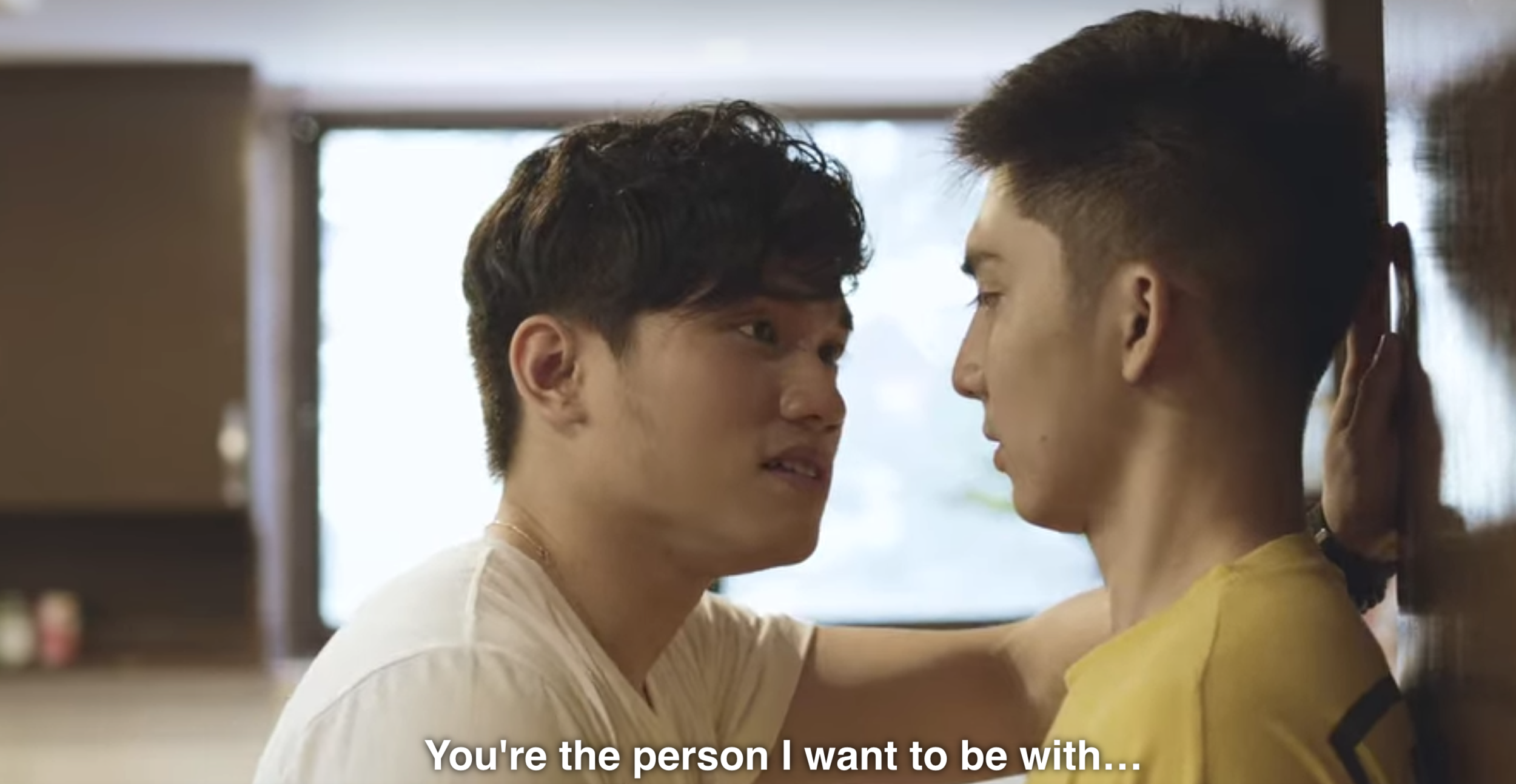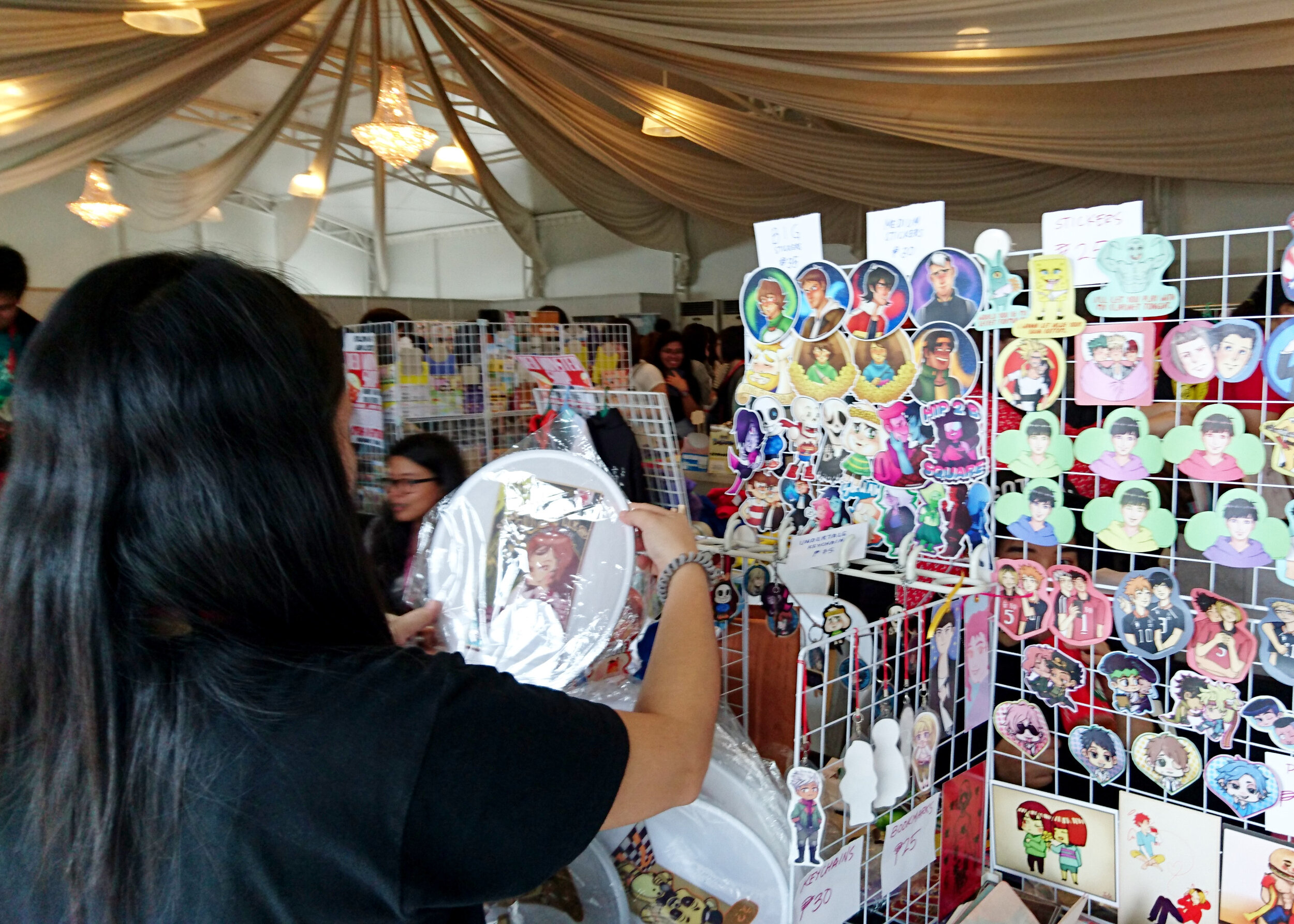Global Fandom Jamboree Conversation: Elizaveta Kasilova (Russia) and Antonella Mascio (Italy)
/Elizaveta Kasilova (Russia) - Life experience in fanfics
Fan art “I will struggle” to the fan fic “The light in the opposite window”. The author of fan art – Климентина (Clementine).
Fanfic is thought to be the story about characters from a book\film\computer game, which touched fan-writers deeply. Nevertheless, fanfic is also a story about the author’s life: about the author's feelings in this period, about psychological problems and life experience.
For me, as for Harry Potter fan and researcher of the reader perception, it is interesting to ask two questions: 1) how fan writer imprints his\her life experience, pain and joy, in text, what aspects of experience he\she puts in text and 2) what opportunity Harry Potter cycle gives to fan writer in describing his\her own background?
Part 1. Love relationship and family
Love is an important part of a lot of fan texts (and of real life, of course). Fans describe different types of relationships: how feelings grow up and break down, how people sometimes can’t understand each other, and make a compromise.
HP cycle presents a rich material for all above mentioned. We have lots of characters (adults and children) with vividly described temper, manner, point of view, in different situations – and it means that a fan writer has a million combinations for speaking about relationships. Whose love will be like «till death do us apart» and whose feeling breaks down because of everyday routine? Let me give you an example of fan text in which we can see how HP characters help the fan writer to tell about common aspects of a relationship.
In “The light in the opposite window”[1], famous Russian fanfic by Magla, the author depicts a problem of choice, which a lot of women come across. Hermione Granger loves Ron Weasley but those points of view on family and career are different. Ron has a very traditional view on woman role in family and on woman place in community: woman should be, first of all, a homemaker, she has to cook well and clear up the home, she shouldn’t make a career. Ron thinks that Hermione is too clever for woman and hopes that when they will be married she will turn to a “standard” woman and leave behind her ambitious ideas and plans. It's easy to see that the fan writer describes common gender stereotypes which we can find sometimes in our everyday life. Hermione worries about the choice between two life's journeys: an ordinary homemaker with Ron, whom she loves(?) or without Ron, trying to understand what she really wants. The author emphasizes how difficult it is to be yourself and not to feel your choice as a fault.
1) Fan art “The sea is calling me” to the fan fic “The Flying Ship”. The author of fan art – green_deer.
Part 2. Professional and everyday aspects and problems
Fanfics sometimes become a way to give voice to the work problems or some everyday troubles. Fan writers put those life routine to the texts for many reasons: they want to express some thoughts or feelings and – what is more – they want to describe a character as a real person with everyday life which looks like an ordinary reader’s life.
Although HP cycle is about wizard’s world, Rowling describes in detail Hogwarts routine – that’s why the fan writer can go on. For example, fans have an opportunity to think about Hogwarts teachers like ordinary teachers with those common problems – lazy students and so on. In the fanfic “Wind in my sails” by popular Russian author tesey prof.Snape is a teacher of English literature in the small English school. One day Harry Potter enters this school, and Severus Snape starts to hate him because Harry doesn’t like reading at all, and he isn’t an erudite person. The fan author (she is a teacher of Russian literature) describes very well the emotions, troubles and situations which a teacher encounters at work. Also, the author puts in fanfic her own remarks on English classic writers and books to make prof.Snape more real. Literature for him is a way to take life in the right spirit, and he teaches Harry to understand books deeply.
Often some everyday situation gives the fan author the opportunity to show how a person battles a psychological problem. In the fanfic “Turn the emergency lights!”[2] by genushka we see Harry Potter studying for a driver’s license. But because of his parents death in the car crash he has panic attacks when he gets into a car. Prof.Snape starts to teach him because he wants to help Harry with driver’s license and stress.
Part 3. Illness and hospital
Illness is a very popular theme in fanfics – probably because we are all afraid of being confined to bed or having a seriously ill relative. Writing and reading about a process of medical therapy gives us a feeling that we are ready for this in real life.
Fan art “Winter dream about Zagreb” to the fan fic “The Flying Ship”. The author of fan art – jozy.
Lots of Harry Potter fanfics picture the situations connected with illness, long hospital therapy or the process of fighting with some serious or unknown disease. For instance, in the fanfic “Quest”[3] by popular Russian author rain_dog Harry Potter suffers from the unknown illness connected with Voldemort curse. He should share his emotions with others to fight with the illness, but it is not so easy for him. In another fanfic by rain_dog, “The Flying Ship”[4], Harry suddenly loses his magic. He takes it as a serious illness and doesn’t know how to live without magic. Harry thinks that he is like a disabled person. The story about his recovering is very important for this fanfic: to bring his power and skills back Harry should understand himself and study a new type of magic.
Global Fandom Conversation Series: Antonella Mascio (Italy) and Elizaveta Kasilova (Russia)
First Round
(Part Two)
- Jane the Virgin - TikTok
Antonella Mascio (Italy). Fandom between clothes and nostalgia.
While reading your paper, Elizaveta, your work on Harry Potter’s representation has raised my interest. The concept of “interpretation map” you have adopted to understand the many possibilities emerging in the text-reader relation can be quite useful and relevant. The “variable part” tells a lot about the reader’s cultural traditions, and as such, it gives also rise to usages and interpretations of the text (Eco, 1979, 1994), according to locally-based cultural perspectives. The “variable part” is also bringing to light – within the framework of a global fandom – unexpected and interesting features of the fans’ work in different countries. A form of popular culture, and for this reason necessarily linked to a geographical space. In the instance of Harry Potter, Elizaveta, you are showing how much this variable is important for fan-fiction: as a “global” product, Harry Potter mingles with local sensitivities, thus giving rise to specific usages linked to fans’ daily lives.
The Queen's Gambit – YouTube
The “variable part” characterizes fans’ productions also in relation to other medial products. In particular, what is interesting for me is observing how fans reprocess features linked to two different levels (sometimes complementary) that are nostalgia and the clothes worn in the TV series - and the meanings attributed to them. These are other means of expression for the fandom dimension, increasingly present in the medial ecosystem and comprised within the perspective of the complex television (Mittell, 2015). I believe we can say that especially clothes have become an important layer of the storytelling: it refers not only to the aesthetic plane – quite important, nonetheless – but it also participates in the making of a complex storytelling.
As regards costumes, fans have already created different ways of expressing their appreciation for quite sometime. In particular, cosplay events had already become regular meeting features in several towns (for example, Lucca Comics in the town of Lucca, Italy). First of all, the style of hairdos or makeup, the choice of clothes or accessories, appear to be a venue for the construction of a social identity, and therefore broadcasting one’s belonging to a specific fans’ community. Fans’ creativity thus becomes quite visible through the use of the language of clothes. However, what has emerged in recent years is a different value assigned to the wardrobe of the characters in the TV series, and not to their spectacularization. Through the clothes, fans bring the individual characters, and the series they appear in, in their daily life, by providing the series with additional meanings which progressively shift from the fictional framework to the real world.
Riuverdale - Pinterest
The choice of the wardrobe to recreate – and therefore of the characters to be highlighted – also shows how fans develop their preferences, which can change according to their cultural and traditional contexts. For example, the wardrobe of the character in Pretty Little Liars Tv series, Aria Montgomery, consisting in clothes of varying styles, is found in many online discussions, and is appreciated and copied by global audiences while harshly criticized by many Italian female fans. The ways fandom feeds on the clothes’ language are many and expand over many horizons of meaning. In terms of the recreational dimension, where the enjoyment of watching the series is linked to the game of imitation, a shift takes place towards a less playful viewing, having to do with the importance of feeling “closer” to one’s favourite character in the plot, to the difficulties they experience and overcome, in order to embody this determination through clothes. In fact, according to some, “donning the clothes of one character” could be of help in facing the difficulties and hurdles of daily life. These are mostly remarks made by female fans, who become very active – online as well – when recreating and sharing the outfits worn by their favourite characters, by adopting for the most part looks similar to the outfits worn on screen, but in their case these are low-cost clothes made by low profile brands, available to all.
In putting the above remarks in perspective with your work, Elizaveta, the topics you have mentioned with regards to the fan-fiction may be considered, such as love relationships, or issues relating to the professional world, in consideration of the importance assigned to the outfits. The self-confidence shown by a character in a love relationship is accompanied in the storytelling by suitable clothing contributing to the construction of the character’s strength. In a rather metonymic way, these elements - the clothes – are used to make reference to a wider picture: the outfit worn onscreen must be linked to the determination, the drive to reach the goal, as played by the character. This seems to be the way through which a part of the fandom interprets the outfits worn in specific situations. For female characters, some forms of empowerment are somewhat evoked on screen through roles, behaviours, attitudes, but also through the choice of outfits, at times original and different from the mainstream taste (e.g. Maeve character from Sex Education). The outfits then take on their specific relevance, not much different from the plots of the love stories which are taken up in fan-fictions and inspire audiences, as you have remarked. The importance that clothes have for some characters in their everyday work routines, is another relevant element found in fans’ productions. For some of them, certain outfits are in fact copied, precisely because they engender self-assurance and self-esteem.
Other fans’ groups use clothes as a way to show their attachment to the tv series as a product, and not to an individual character. Many examples of this kind are found today on TikTok. In these short videos, fans replicate the outfits of many protagonists of one or several TV series, by also introducing “gender fluid” versions of them: male characters’ wardrobe adjusted to a female look, and vice-versa.
For a part of the fandom, the wardrobe is strongly emphasized in social networks. The fandom of the tv series overlaps with the fandom of fashion, by determining forms of real textual productivity. The cultural capital shown in these cases manifests itself in an aggregate of knowledge, linked to both the tv series and the fashion world. In these sharing spaces, where the visual and audiovisual language prevails (Instagram, Pinterest, YouTube, TikTok), the game consists in recognising the outfit and where it comes from: the brand, the collection, or fashion magazines publishing them. Fans engage in highlighting and explaining that information in their textual productions, in the “overflowing approach” made by fans (Fiske, 1992; Bataille 1967) in order to fill the void left by the storytelling.
The research work carried out by fans regarding clothing involves at times vintage outfits which, for some, recall the nostalgic mood. This topic emerges mostly in the discussions involving adult fans, who evoke online a series of connections, activated by the tv series in an intertextual fashion, with other medial products from the past (for example Stranger Things). I would like to know, Elizaveta, if, in the fan-fictions about Harry Potter you have described, you have found elements of nostalgia and the adjustment of costumes into outfits which could be worn in everyday life. Or other aspects related to nostalgia, present in fan-fiction and related to Russian tradition. Nostalgia, in fact, concerns a personal and cultural emotion. It seems to be related both to a feeling of distance “from a place and time in one's past” (Prete, 2018), and to a desire to reconnect with that same place and time - nostos. In this way, we can use nostalgia as a key to talk about global fandom – with respect to a kind of common fan sentiment determined by the mood of a TV series, or another media product - or regional fandom - when this sentiment is common only for a part of the total fandom.
Breaking Bad - Lucca Comics
References
Bataille, G. (1967), La part maudite: precede de La notion de depense, Les editions de Minuit, Paris.
Eco, U. 1979, Lector in fabula, Bompiani, Milano.
Eco, U. 1994, Sei passeggiate nei boschi narrativi, Bompiani, Milano.
Fiske, J. (1992), “The Cultural Economy of Fandom”, in Lisa A. Lewis (ed. by), The Adoring Audience: Fan Culture and Popular Media, Routledge, New York – London.
Mittell, J. (2015), Complex TV: The Poetics of Contemporary Television Storytelling, New York University Press, New York – London.
Prete, A. (2018) (ed. by), Nostalgia. Storia di un sentimento, Raffaello Cortina Editore, Milano.
[1] URL: https://fanfics.me/fic60977
[2] URL: https://fanfics.me/fic83087

